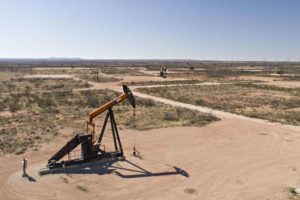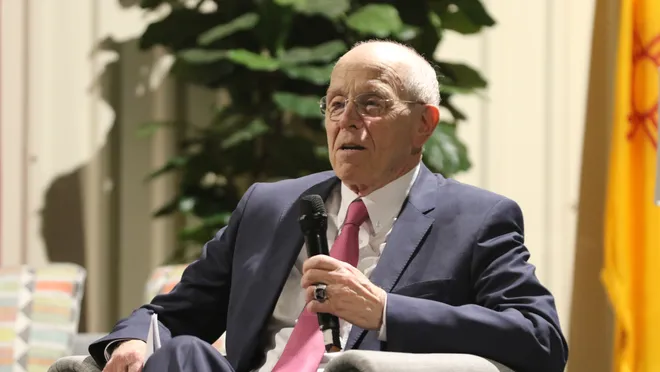 Oil crosses $65 milestone, marking stunning recovery from historic bust
Oil crosses $65 milestone, marking stunning recovery from historic bust
Oil prices closed above $65 a barrel for the first time in nearly two years, marking a surprising milestone in the industry’s recovery from the worst oil crash in a generation.
West Texas Intermediate, the U.S. crude benchmark, settled Friday in New York at $66.09, the highest since April 2019. It’s a stunning comeback from the historic pandemic-driven oil bust, as most energy analysts just four months ago were predicting oil might peak at $55 a barrel this year as coronavirus cases continued to climb. While the soaring price might not immediately help those who lost jobs during the crash, experts say it could help bring them back faster and speed recovery of a regional economy so closely tied to oil and gas.
“This is good news for the oil and gas industry and good news for Houston,” said Patrick Jankowski, senior vice president of research at the Greater Houston Partnership.
The industry and region’s economy began its tailspin about a year ago, three months after the coronavirus was identified in December 2019 in China. Efforts to slow its spread in the U.S. wiped out demand for gasoline and jet fuel, sending crude from a 2020 high of $63.27 in January to a record-low negative-$37.63 in April.
Prices have rallied in recent months, as investor optimism soared amid the rollout of vaccines, which promise an end to the pandemic. The prospect of another federal stimulus package rolling out this month as well as Saudi Arabia’s pledge this week to extend voluntary production cuts of one million barrels per day into April have raised crude over the $65 a barrel threshold, a price at which many oil companies can make a healthy profit.
Jankowski warned, however, that most oil companies planned their production around oil prices about $20 lower for months more, so they’re unlikely to benefit fully from higher-than-expected crude prices. Furthermore, oil companies will likely remain highly cautious and disciplined even if crude prices continue to climb. They’re not going to change course based on a single day’s price, Jankowski said.
“Higher prices may temporarily help companies who might have gone under to remain solvent,” Jankowski said. “But this is not necessarily going to lead to a surge in drilling activity. Companies are going to use the extra cash flow to pay down debt and reinstate dividends to get investors back behind them.”
Oil companies’ fiscal discipline and muted spending plans mean that the thousands of laid-off energy workers in Houston will have to wait a little longer for jobs to return. Producers learned to be more efficient during the pandemic, using remote-controlled wells and new technologies to pump oil at lower prices with fewer people, Jankowski said.
Texas lost 60,000 oil exploration and production jobs last year, on top of job losses during a difficult 2019, according to the Texas Alliance of Energy Producers. It could take at least three years to bring back most of those jobs, said Karr Ingham, the Alliance’s petroleum economist.
“$65 oil is a pleasant surprise,” Ingham said. “But just thinking about all we’ve lost, 80,000 jobs over the last two years. In the best circumstance, it’s going to take years to bring them back. This industry tends to lose jobs in a hurry, and takes longer to bring them back.”
Texas added about 2,400 jobs from August to December, the Alliance said, as drilling and production activity returned to the oil patch. Much of the oil industry’s recovery and job growth will depend on the success of the vaccine, stemming spread of the virus and OPEC’s commitment to production curbs, Jankowski said.
Exuberance surrounding the price of oil has yet to reach the oil patch, where companies added one drilling rig this week, pushing the U.S. rig count to 403 seven months after it hit a low of 244 in August. Texas added five rigs this week, pushing the state rig count to 202, according to oil-field services company Baker Hughes and research firm Enverus, which provide the weekly tally.
The industry still has just about half of the 793 rigs that wereoperating nationally a year ago, before the pandemic changed everything. The U.S. produced 10 million barrels per day of crude at the end of February, down from 13.1 million barrels per day a year ago, according to the Energy Department.




0 Comments